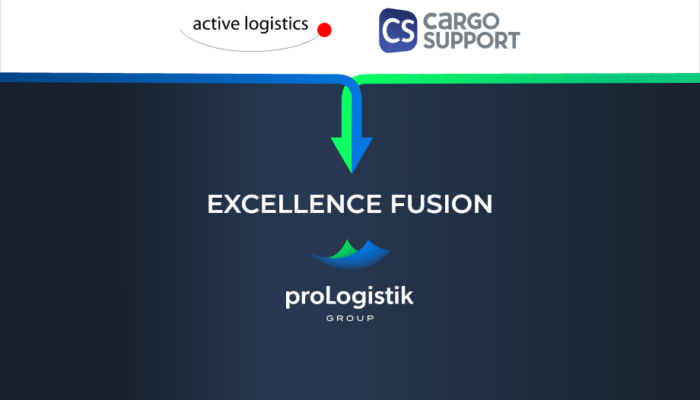Every kilowatt hour counts. Reducing electricity consumption as permanently as possible is not only a key to achieving the ambitious goals of the energy transition. Even in times of rising costs due to energy shortages and galloping inflation, it is important to save wherever possible! Our latest blog article shows why digitalization is THE solution and how you can use a warehouse management system (WMS) to directly influence the ecological footprint and operating costs of your warehouse.
Do you know chess? The associated tactical requirement is to gradually put the opponent under pressure with strategically well-considered moves and ultimately bring them to their knees. In the context of the energy crisis, the chosen comparison is perhaps a little bold, but not entirely far-fetched. This is because a modern WMS provides you with numerous options for permanently monitoring and controlling warehouse parameters and components, as well as allocating resources in a sensible manner according to targets.
Identify and analyze consumption-critical processes
To achieve this, the points where energy consumption is highest must be localized in advance. Obvious “power guzzlers” can of course be found at hardware level. These can be storage and retrieval machines and conveyor technology. The building equipment is also decisive. But more on that later. Let’s look at the processes first. This is because there is much more potential for savings than is often assumed. According to expert calculations, for example, around 50 percent of energy consumption in intralogistics is accounted for by order picking. This is particularly the case if staff still do their work with paper printouts, pens and clipboards. You can counteract this time-consuming and resource-intensive procedure by using a warehouse management system (WMS). The switch to digitalized, online warehouse management also has the advantage of being able to achieve 100% stock reliability, create transparency throughout and continuously carry out various optimizations in accordance with the criteria of “Green Logistics”. They save energy, streamline processes and significantly reduce operating costs.
Pick faster and optimize performance
But what opportunities are opening up in the area of order picking in particular? The be-all and end-all is the possibility of paperless order processing initiated by a WMS. Not only do they save vast amounts of paper, the production of which is energy-intensive and causes procurement prices to skyrocket. At the same time, the WMS guidance system for workers minimizes walking distances and search times, and the integrated forklift guidance system eliminates unnecessary transport journeys in the warehouse, so that energy can also be significantly saved here.
Currently, the most widespread methods of paperless picking are pick-by-voice, pick-by-light, forklift guidance systems and mobile data capture via handhelds. When it comes to making the best possible use of existing resources, reducing errors and speeding up processes, voice-controlled picking in particular offers considerable potential.
Optimization potential:
- Employees no longer have to carry pick lists with them
- and have their hands free for the actual process, which is acknowledged verbally.
- Work is easier and faster, gripping times are reduced
- and real-time feedback is provided to the warehouse management system.
Taking these factors into account, it may even be possible to reduce weekly working hours on a case-by-case basis without compromising logistics performance. This would not only save personnel costs and expenditure on lighting and heating in theory, but also in practice.
Warehousing and transportation strategies put to the test
A forklift guidance system (SLS) also contributes directly to the more targeted use of resources and better utilization. Transport orders are assigned to the vehicle via the WMS. The system specifies the shortest route to the extraction point. Empty runs and downtimes are reduced, search runs are eliminated. This also speeds up order processing enormously and, in parallel with the energy saved, reduces operating costs.
Further potential for improvement can be found at the level of warehouse strategy and replenishment control. For example, the so-called ABC classification is ideal for storage in order to further reduce walking distances and during picking. The article master is subdivided according to stock removal frequency. Category A refers to fast-moving items that should be directly accessible at all times. Multi-order picking can also be used, a process that is also supported by modern warehouse management systems (WMS) and significantly reduces throughput times. Individual orders are combined into so-called batches. The higher this combination is, the greater the time and distance saved and therefore the higher the productive output when picking. Once the picking process is complete, the picked items are assigned to the various individual orders.
Precisely metered replenishment control also reduces costs and lowers
(operating) costs. When integrated into the warehouse management system, it is then possible to systematically replenish not only picking zones but also entire warehouses from external sources. The supply can be triggered by the WMS as required, for example when the minimum stock level is reached, or due to shortages.
Further measures with a big impact
At this point at the latest, it becomes clear that modern storage and picking principles in conjunction with powerful warehouse management software offer a wide range of opportunities to meet current challenges – both with regard to the energy crisis and growing cost pressure, as well as in view of the ongoing shortage of skilled workers and the urgent need to avoid wasting resources unnecessarily.
From a holistic perspective, intelligent load monitoring, lightweight construction and standby mode also play a key role here – especially in (partially) automated systems. WMS-controlled settings can be made for energy-intensive storage and retrieval machines, for example, that take into account high and low tariffs. Transfers can also be made at times when the electricity tariff is cheapest.
The building equipment also promises improved energy efficiency. LED lighting technology massively reduces power consumption in the warehouse. LEDs also offer a significantly longer service life and therefore do not need to be constantly renewed or replaced. It is also not necessary to constantly illuminate comparatively less frequented areas in the warehouse completely. Instead, they can be equipped with motion detectors. Last but not least, a building offers further options for significantly reducing energy consumption and the associated costs. Modern heating or cooling systems, solar modules (photovoltaics), geothermal energy, combined heat and power units, underfloor heating and the separation of different climate zones in the warehouse by air walls are just a few examples.
Actively taking countermeasures instead of holding out in a halfway position
Of course, the introduction of a warehouse management system (WMS) is initially associated with initial costs. However, the previous explanations show that modern warehouse management software offers numerous levers for deploying resources where they are actually needed, making processes more sustainable, significantly reducing energy consumption and cutting operating costs. This has never been as important (for survival) as it is today! The mechanism offered to you is not able to checkmate the energy crisis and inflation as “opponents”. A draw is also rather unlikely given all the imponderables. However, a WMS significantly mitigates the consequences in certain areas. At the same time, companies and those responsible for logistics are making an important contribution to climate and environmental protection that can be shaped according to their possibilities by streamlining processes and reducing harmful CO2 emissions to what is really necessary.
Our supply chain experts know the challenges and can advise you.



